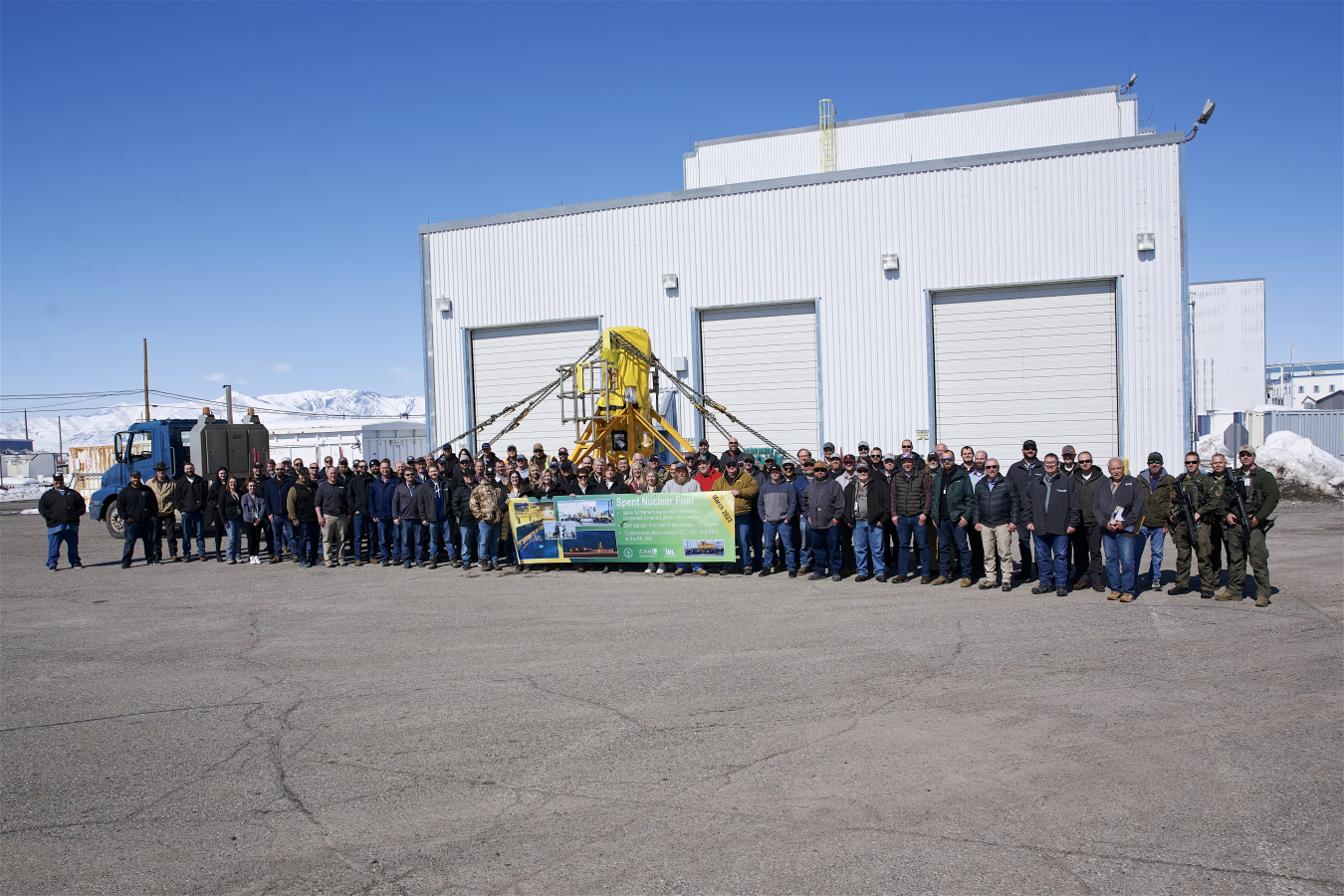
Employees supporting the spent nuclear fuel wet-to-dry project at the Idaho National Laboratory Site celebrate the last fuel elements removed from a water-filled basin within a building at the Idaho Nuclear Technology and Engineering Center last week. The Experimental Breeder Reactor-II fuel was safely transported to the site’s Materials and Fuels Complex the next day. Crews completed the 1995 Idaho Settlement Agreement milestone more than nine months ahead of schedule.
IDAHO FALLS, Idaho – Checking off an EM 2023 priority, crews retrieved the last spent nuclear fuel from a water-filled basin and safely transferred possession of the fuel elements to a complex at the Idaho National Laboratory (INL) Site last week, completing the project more than nine months ahead of a milestone under an agreement with the state of Idaho.
It was an accomplishment more than two decades in the making. EM worked closely with DOE’s Office of Nuclear Energy and the Office of Naval Reactors Idaho Branch Office, and five contracting companies supported the effort over the years, including current EM contractor Idaho Environmental Coalition (IEC). The fuel was transferred from wet to dry storage to prepare for its final disposition at an offsite repository.
“The completion of the spent nuclear fuel wet-to dry storage transfer project is certainly one of the Idaho National Laboratory Site’s most meaningful cleanup accomplishments to date,” said Connie Flohr, manager of EM’s Idaho Cleanup Project. “The removal of the last elements in underwater storage was a well-coordinated effort by our high-performing workforce and brings an end to a massive effort to safely transfer thousands of spent nuclear fuel elements from wet to dry storage over the past decade.”
EM Senior Advisor William “Ike” White, Idaho Gov. Brad Little, Idaho Attorney General Raúl Labrador and other elected officials and dignitaries are set to recognize the achievements of employees and the safe completion of the milestone on March 28 at the Idaho Nuclear Technology and Engineering Center (INTEC).

Employees retrieved thousands of spent nuclear fuel assemblies from wet storage basins and canals and transferred the fuel to dry storage facilities at INTEC, the Naval Reactors Facility and the Materials and Fuels Complex (MFC) at the INL Site.
Notably, workers transferred Three Mile Island Unit 2 spent nuclear fuel and debris from the 1979 reactor accident in Pennsylvania from a Test Area North storage basin to INTEC beginning in 1999 and placed the material into horizontal, concrete dry-storage vaults permitted by the U.S. Nuclear Regulatory Commission and managed by IEC. Of the INL Site spent nuclear fuel inventory, the Three Mile Island Unit 2 spent nuclear fuel and debris is the largest amount by mass and volume.
The last spent nuclear fuel retrieved from the basin at INTEC last week was from the Experimental Breeder Reactor-II, which operated at the former Argonne National Laboratory-West, now called the MFC, from 1965 to 1994. At one time, the reactor provided nuclear power to all INL Site facilities.
The now-empty spent nuclear fuel storage basin at INTEC — the largest in the world — will remain open until EM and IEC complete remaining mission work. DOE will determine the final end state for the basin at that time.
To receive the latest news and updates about the Office of Environmental Management, submit your e-mail address.
